Technology-driven Talent House Hosting Plan Pilot
This Pilot, located in San Sebastian (Basque Country / Spain),
will look at an innovative digital service supporting talent
attraction and return to the city, promoting competitiveness
and economic development. San Sebastian has been already
working to develop programmes aimed at attracting,
retaining, and returning talent and one of these is the Talent
House Hosting Plan, which was created in 2011 with the aim
of supporting local technology and research centers in
attracting highly qualified profiles. This Hosting Plan includes
advisory services on administrative procedures to live in our
city, support for companions and also an accommodation
service in the Talent House building.
The pilot project planned within the framework of the TPL
focuses in this last service, the accommodation in the Talent
House building.
The two actions that are planned to be developed for the
improvement and digital transformation of the service are:
a) A 360º visit to the Talent House building and its spaces to
improve the user experience and allow interested researchers
to get to know Talent House in advance of their possible
arrival, and,
b) A Chatbot to explain the accommodation service and other
services of the Talent House Hosting Plan, which completes
the visit and allows the interested persons to receive
information

Country: Basque Country (Spain)
Type: Talent attraction
Pilot Development
The main progress carried out to date in the San Sebastián Pilot is the development of a 360º Virtual tour.
Check our tour here:
Fomento San Sebastian Virtual Tour
For more information on the development carried out, take a look at:
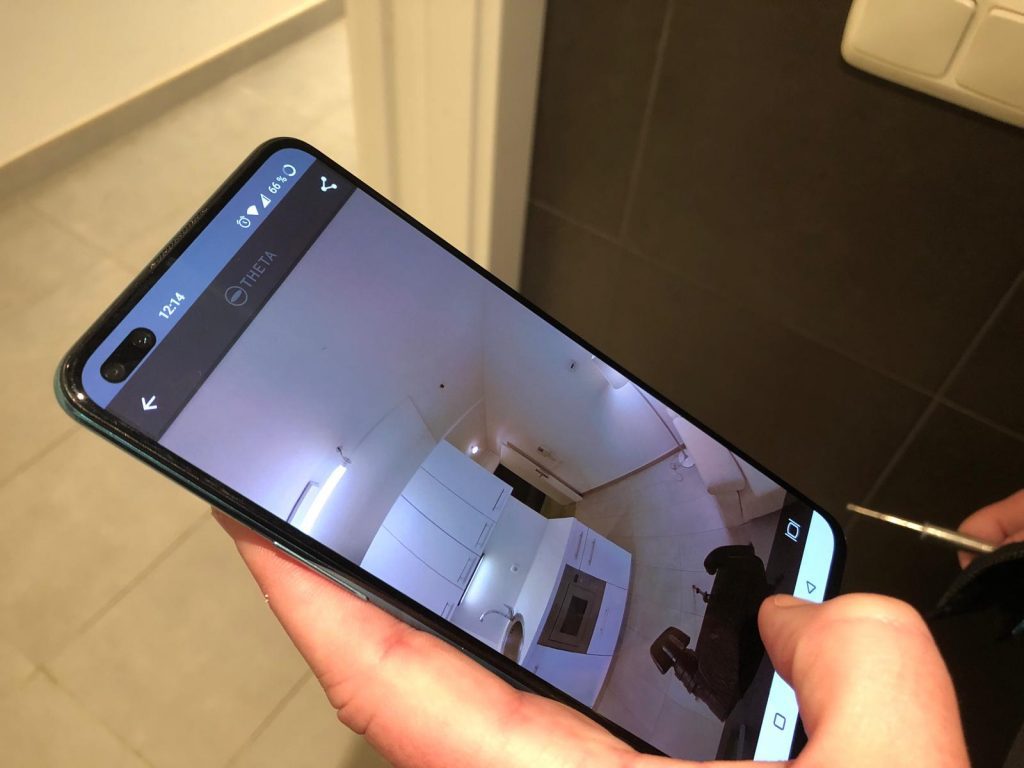
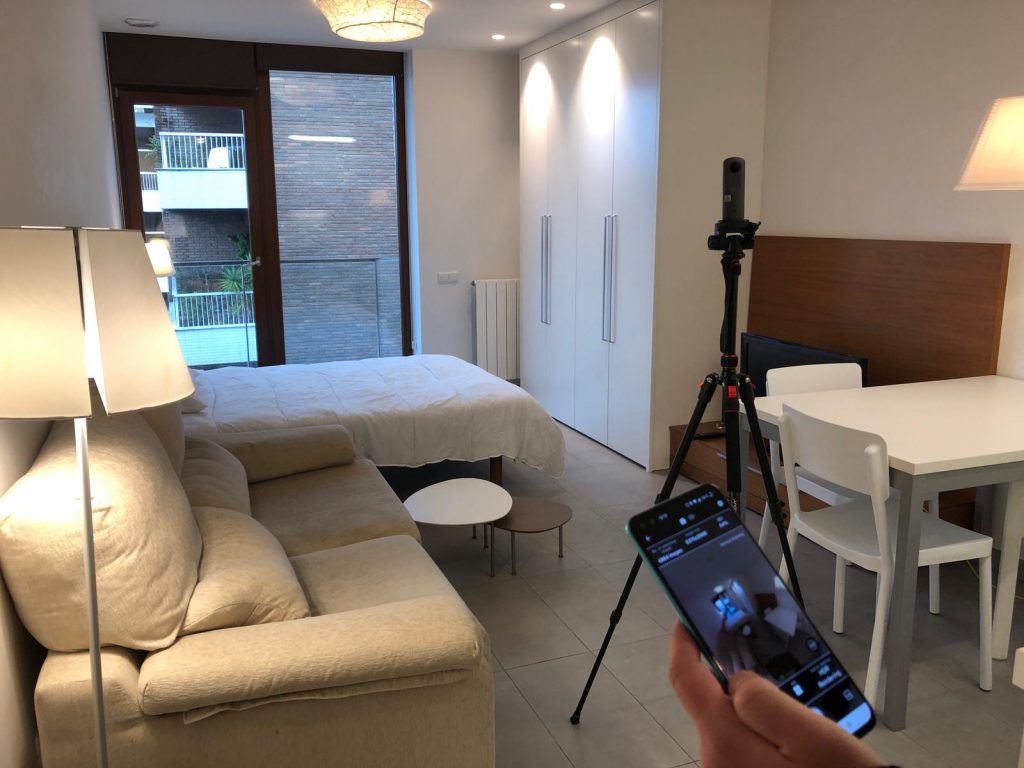
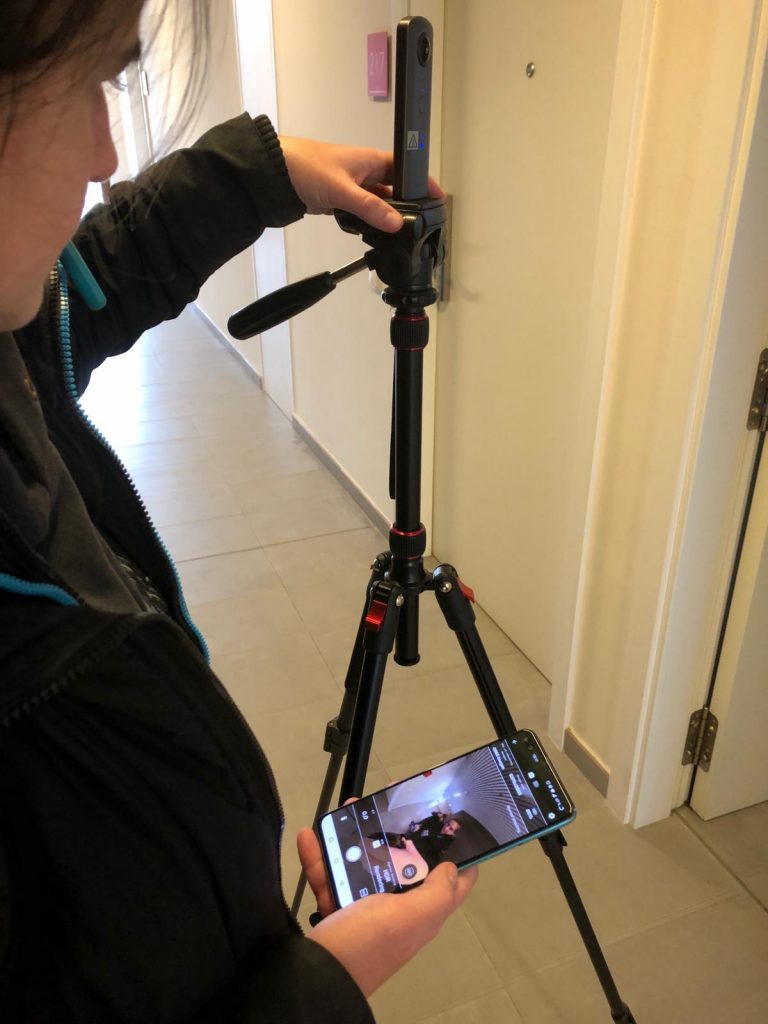
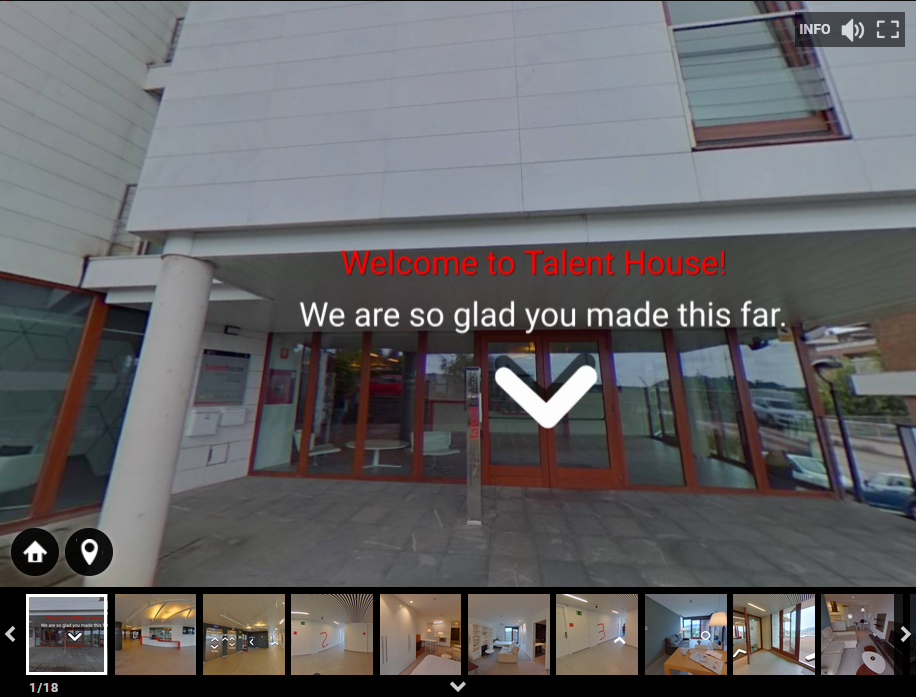
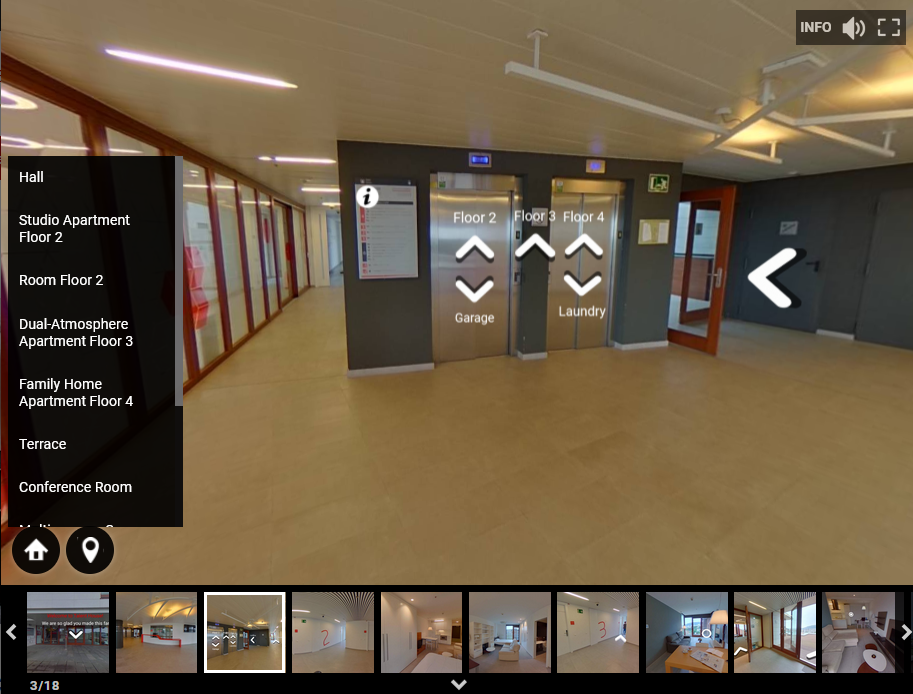
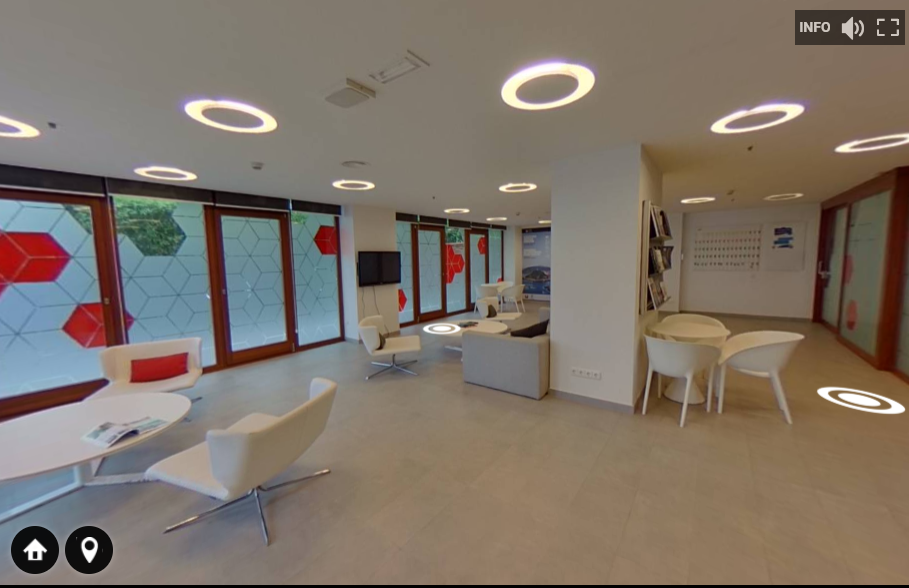
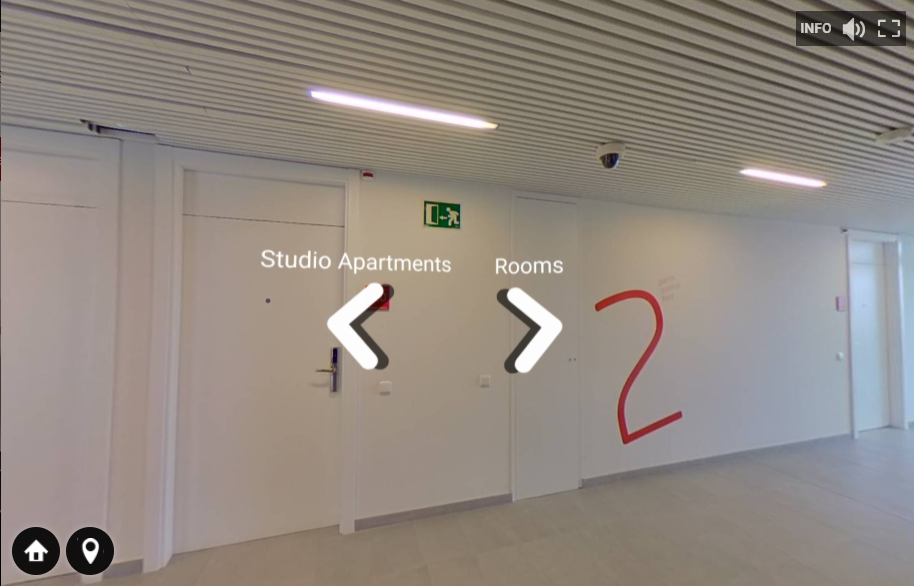
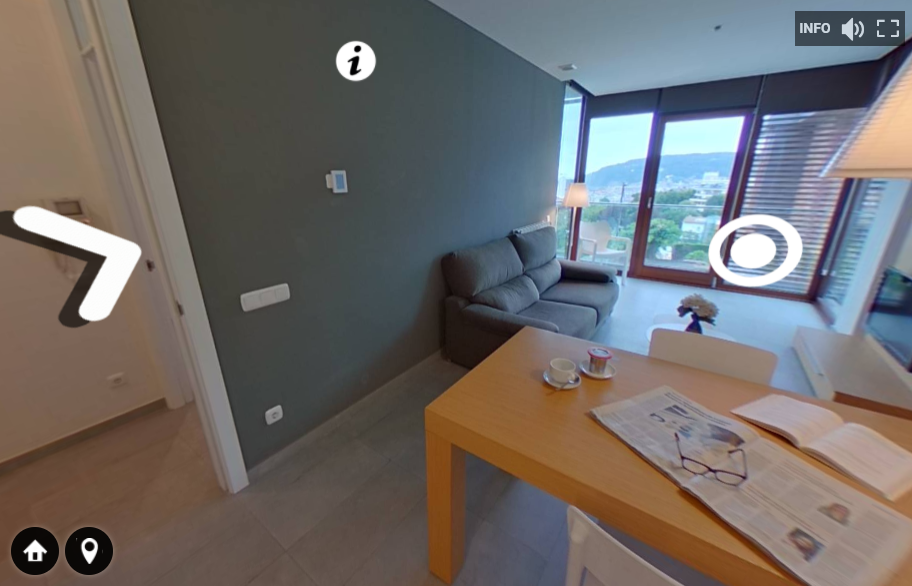
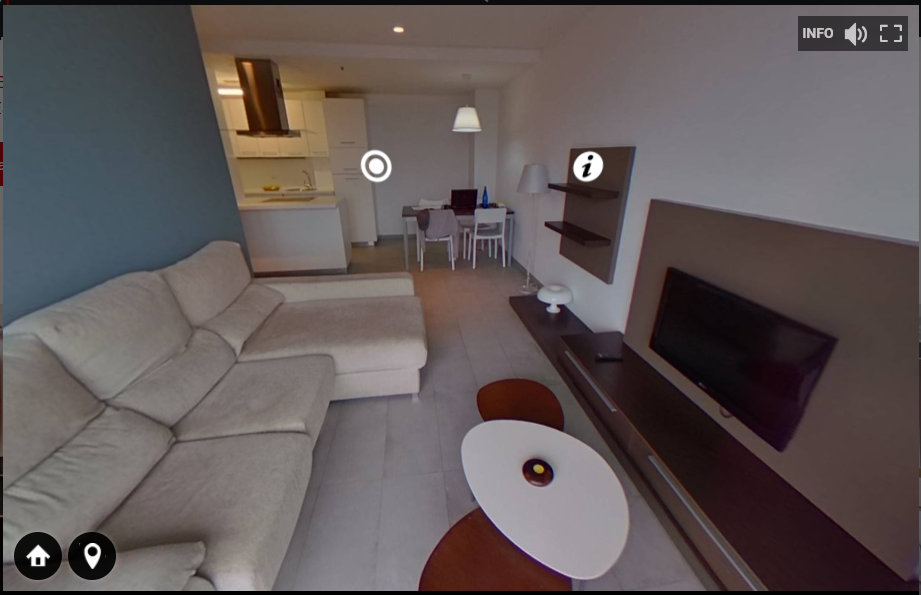
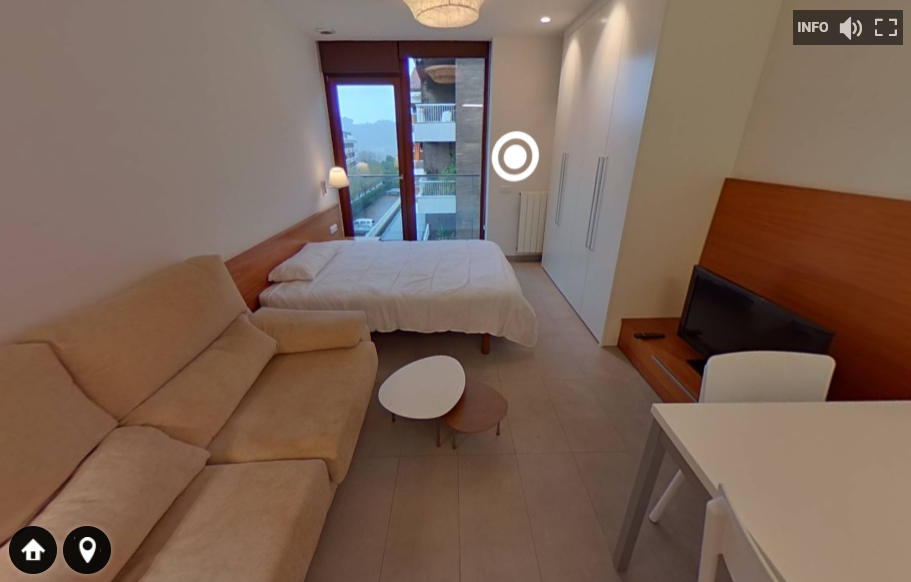
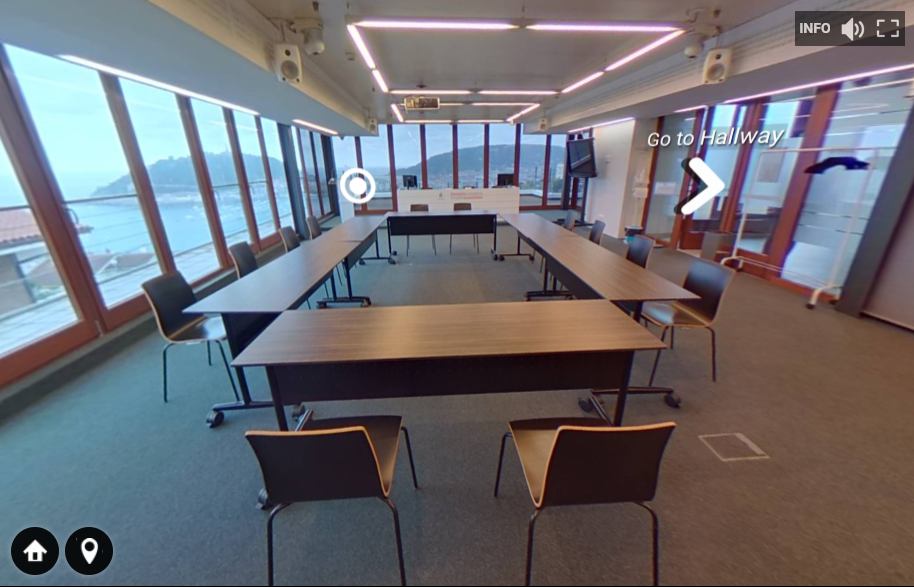
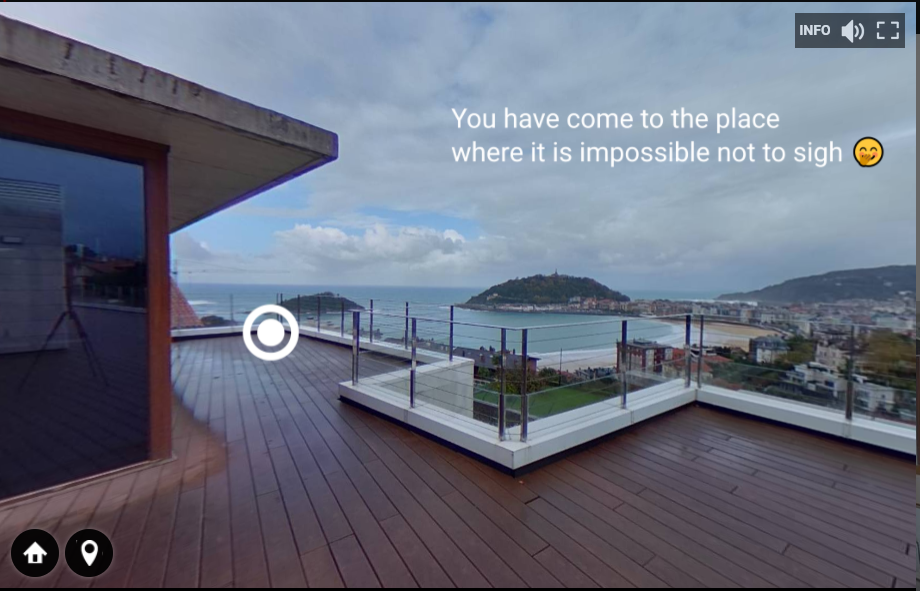
Conclusions
Talent House is an initiative led by Fomento San Sebastián that aims to support the scientific
community of the city of San Sebastian. Among its different services, the “accommodation service” provides a place to live for researchers during their work and research stay in the city. Newly developed “Fomento San Sebastián Virtual Tour” is a 360º Virtual tour to the Talent House building and its spaces aimed to improve the user experience and allow interested researchers and other potential users to get familiar to the Talent House in advance of their possible arrival to the city.
The tasks were designed to check whether users can move around the building and whether they can retrieve information about various parts of the house. System Usability Scale results confirmed that the respondents found the tool very convenient to use. The testing results can be interpreted as above the average, or even “excellent”. In terms of the user experience, the users rated efficiency and perspicuity the app’s greatest value, meaning that they felt the service is intuitive and easy to use. When comparing the results to a benchmark data set, the pilot achieved very good results, especially in four areas (attractiveness, perspicuity, efficiency, dependability) where only 10% of other similar products were rated better.
Issues that should be noted in relation to the feedback received from users and to the conclusions of the testing process of this 360º pilot:
1./ Redesign of the Talent House website in order to host this new tool
Firstly, it must be highlighted that a fundamental part of this process, which was carried out in parallel to the user testing, was focused on improving, redesigning, and updating the Talent House website (https://talent.fomentosansebastian.eus/en/). This strategic decision was made with the aim of ensuring a smooth and effective integration of the 360º pilot tool once developed. The web redesign focused on the following improvements: a) Improved User Experience: to provide a more intuitive and satisfying experience, the redesign of the interface and information architecture was done in order to simplify the navigation and facilitate access to the desired information; and b) Optimising Functionality: the technical infrastructure has been worked on to support the features and adapt to the new tool.
2./ Improvements/adjustments after feedback from users
Secondly, without a doubt, it is essential to underline and value the process of adjustments and improvements that was carried out after this 360º pilot´s user tests, and that took into consideration the feedback provided by the 20 participants in these tests. This feedback helped FSS to improve both the assembly and the information provided, improving the final quality of the tool.
The process carried out to implement these improvements can be summarised as follows: 1. Detailed analysis of user feedback: after the initial user testing, an analysis of the feedback collected was carried out. This included the review of comments, suggestions, and observations. Comments were grouped into categories to identify patterns and trends; 2. Prioritisation of areas for improvement: using the analyzed feedback, priority levels were assigned to each of these areas based on their impact on the user experience and project objectives; 3. Designing effective solutions: once the priority improvement areas were identified, adjustments were done, reviewing the navigation, information structure and other aspects of the tool; 4. Further testing: after implementing the proposed improvements, additional internal testing was carried out to ensure that the solutions worked as expected and that the problems identified by the users had been adequately addressed.
In summary, the process of adjustments and improvements following user testing was an essential phase in the development of this pilot as it ensured that the tool and services offered were aligned with the needs and expectations of the users.
*Final note about the steps carried out to develop an AI-Chatbot pilot for Talent House:
As planned, research was done in order to choose the Chatbot tool to be used in the pilot. However, the technical complexity of this pilot led FSS to the need to launch a public procurement process to select an external service provider that would enable us to carry it out. This complexity was in fact very present for the FSS staff throughout the entire process of drafting the specifications and considerable time was invested, before drafting the tender, in acquiring not only knowledge about the different options for choosing one type of development or another, but also to introduce the staff to the "guts" of how information is constructed and processed in a Chatbot. As a conclusion, it can be said that, even though it was no possible to carry out the testing of this pilot in the time frame of TPL´s project, it has been a stimulating learning process about the Chatbot technology but also a great challenge for our staff.
Once the public procurement process was closed and awarded and within the scope of the TPL project, we performed the elaboration of a Report for the analysis of proposals of Virtual Assistant for the pilot. Taking as a basis this analysis, the Virtual Assistant named Botpress was selected and the pilot´s development is currently in the first steps to ensure its implementation.

San Sebastian Team
The Fomento San Sebastian Team includes: Irene Murillo Haizea Galarreta Gorka Díez



